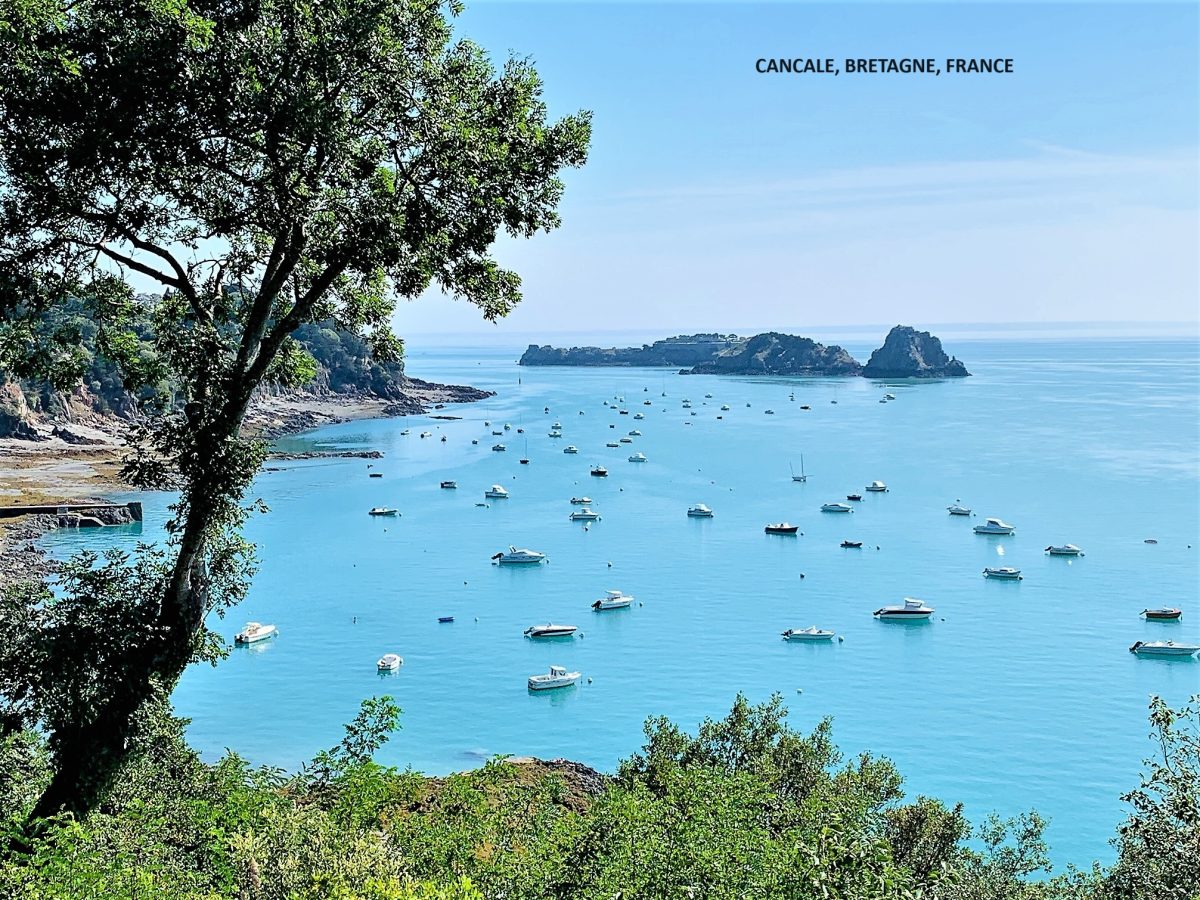I adore places which are steeped in history and occasion and Ciudad Rodrigo is just such a place. Amongst other things it was the scene of a Wellington victory during the Peninsula War or, as the Spanish call it, the War of Independence. It was during the period 7 -20 January 1812 that the then Viscount Wellington (he didn’t obtain his dukedom until after the Battle of Talavera), laid siege to the city of Ciudad Rodrigo (occupied by French invaders under the French General Jean Leonard Barrie) with his combined British and Portuguese army. The city was successfully stormed by British troops during the night of 19 January, with the 88th Connaught Rangers and the 45th Nottinghamshire regiments both distinguishing themselves. Casualties were heavy with 2 British Generals killed, including Bob Crauford (General of the Light Division). The French lost almost 2,000 men (mostly captured) and 153 cannon. More importantly, the victory opened a route into Spain which the British would soon exploit. The Siege of Badajoz would follow.
Let me talk a little about Ciudad Rodrigo. The old town is wholly encased within thick 12th century walls (except for where Wellington’s troops forced a couple of breaches and these have long since been repaired). The walls are very much open to walkers but, more of that later.
I crossed the River Agueda and walked through the walls to the south of the city via the Puerta de Colada (one of 7 original entrances into the town) and this particular gate took me almost immediately to the 14th century castle of King Henry II (Henry II of Trastamara) which stands at the highest point of the city.



The castle is now a Parador and one of the earliest to be opened; the very first being the Gedos in 1928. In case you don’t know, the Parador’s are a chain of government controlled 3 to 5 star hotels (Paradores de Turismo) established in the early 20th century to accommodate tourists and travellers while at the same time showcasing Spain’s culture, nature and/or gastronomy. The word Parador is derived from the Spanish word ‘parer’ which means to halt, stop or stay and the intention was that they should help improve Spain’s image. Currently, there are almost 100 such hotels dotted across Spain (and another one in Portugal). More than half are located in historical buildings (castles or monasteries for the most part) and many others offer accommodation in National Parks or other such outstanding natural spaces. We would love to tour Spain using these hotels and the one in Ciudad Rodrigo is very reasonably priced but; they will not take more than one dog per room. Vanya and I would have to take two rooms if we were to bring Nala and Beanie along. That’s a very silly rule but, whether you sleep in them or not, these places are invariably worth a visit.

So there I was at the entrance to the castle on the Plaza del Castillo – In front of the castle is a verraco (another name for a wild boar, methinks?) left by Vettons (Celtiberian people who lived here back in the 6th century) but this particular verraco was pulled from the river where it had been dumped many centuries ago – I simply had to go in for a wander and a beer.
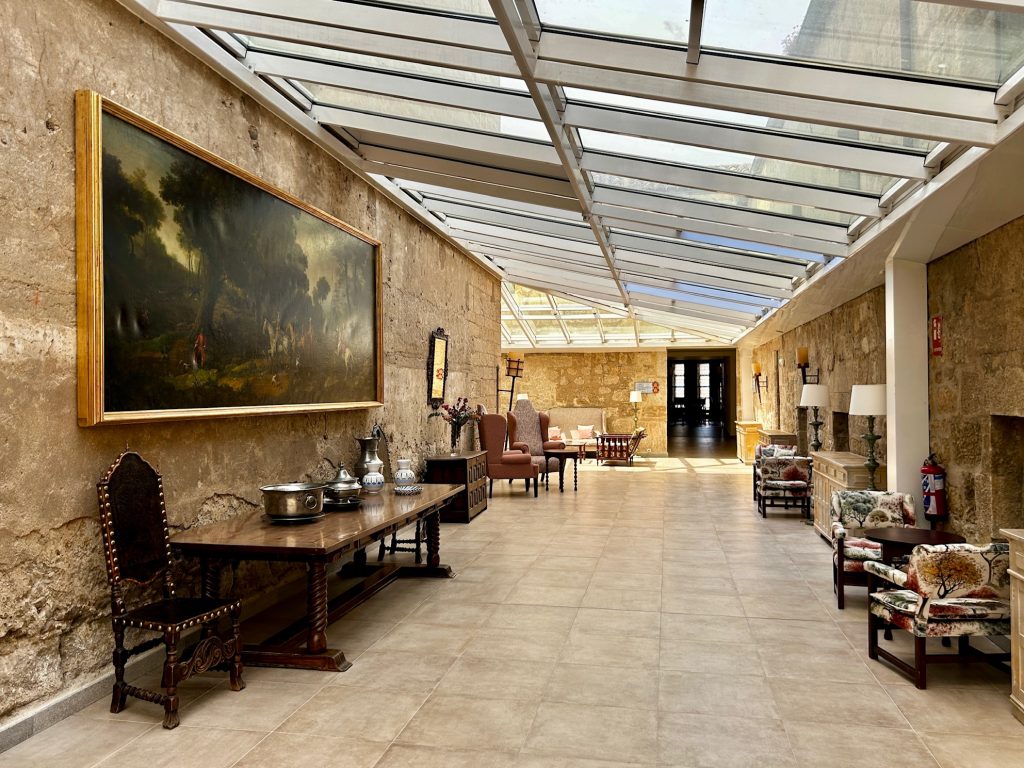
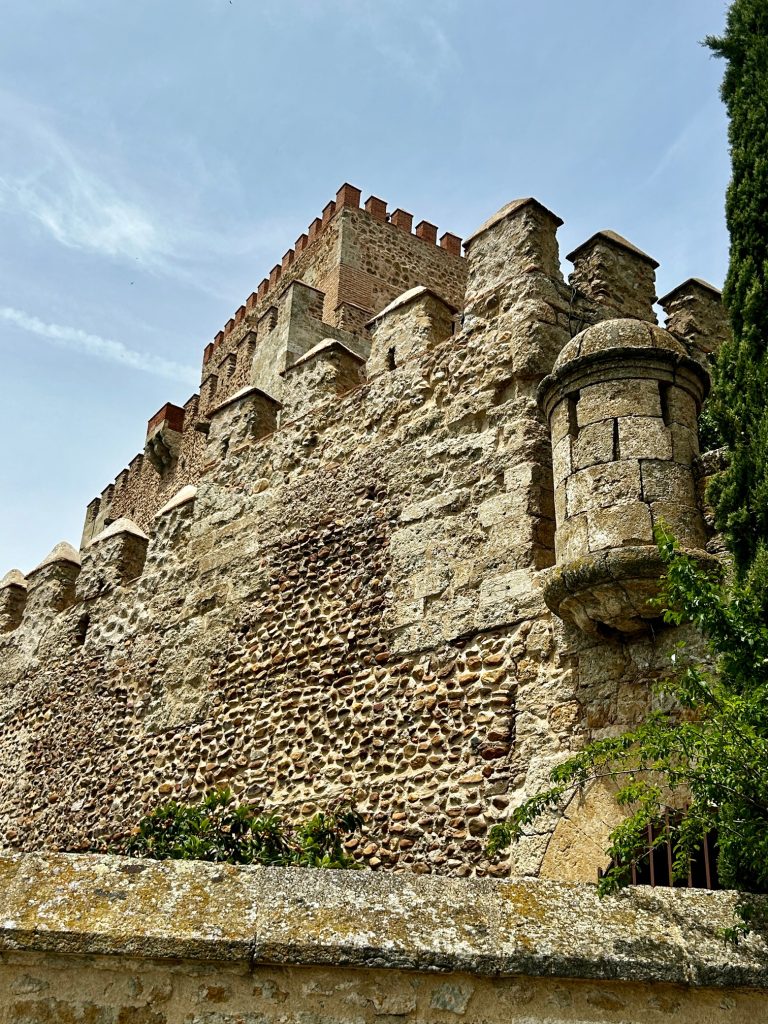


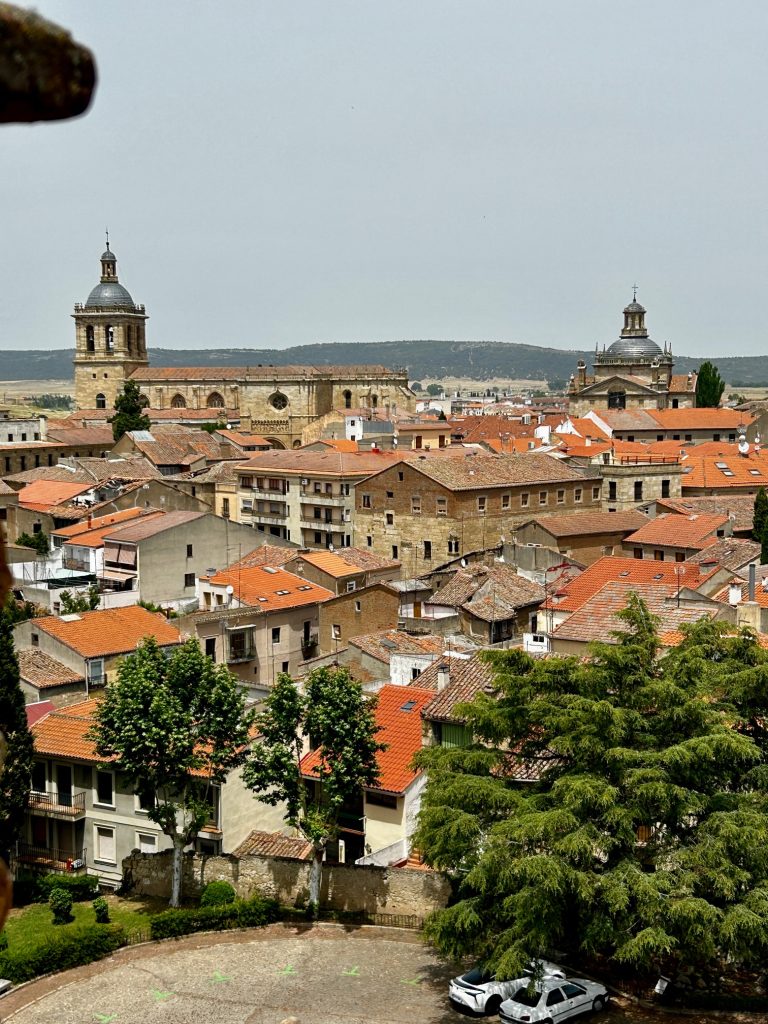
From the castle, I made my way to what is usually the centre of almost every old town in Spain – the Plaza Mayor with it’s numerous bars, restaurants & pastry shops. I was in heaven.
As is so often the case in Europe, the 16th century town hall (the ayuntamiento) is to be found on the Plaza Mayor, together with various manor houses dating from the same period (including the Cuetos House, the house of the 1st Marquis of Cerrablo but more about him later). I paused for a wine and got to talking with a local who advised that, during festivals, this square is fitted with a ‘mobile bull ring’ (or at least I think that is what he said). There’s no denying that most everybody hereabouts seems interested in bull fighting. There was quite a crowd inside the bar watching it live on tv. I read subsequently that the so called mobile bull ring here can accommodate almost 4,000 people.
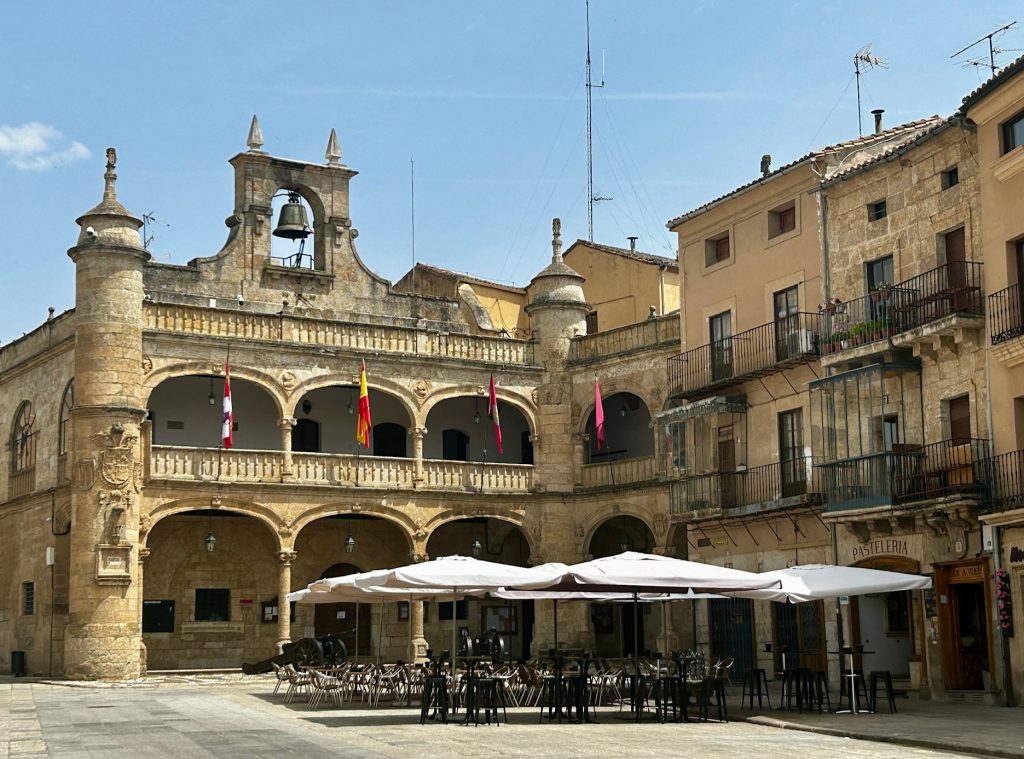
The 16th century town hall on Plaza Mayor is as impressive as any building in the town. It’s front is flanked by two small towers and above the arcaded upper floor is a large bell tower. Moreover, two cannon are situated either side of the front entrance. Well, this city figured in the Peninsula war and, a hundred years before that, the War of The Spanish Succession The Tourist Office is housed inside but the town hall but it is the first tourist office I have ever visited where the staff (a bloke) doesn’t speak a word of English. Hey, we managed.
The old town is very compact and easily explored. It is in tremendous condition and kept very clean. Wandering the narrow streets and lanes is a delight.
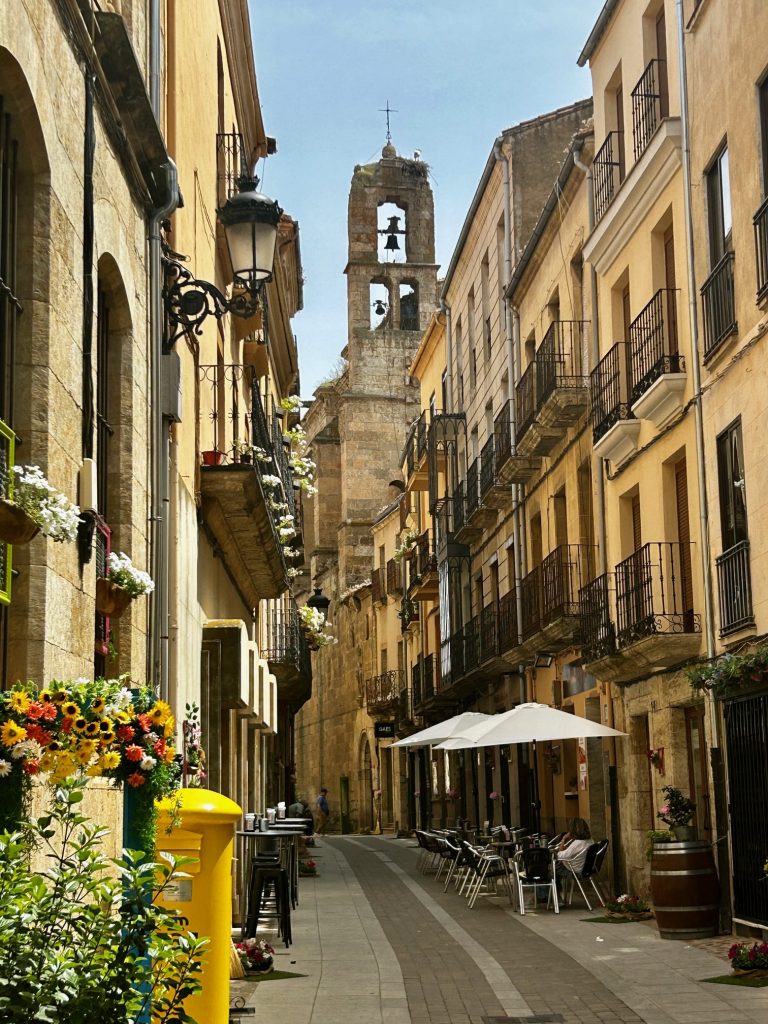
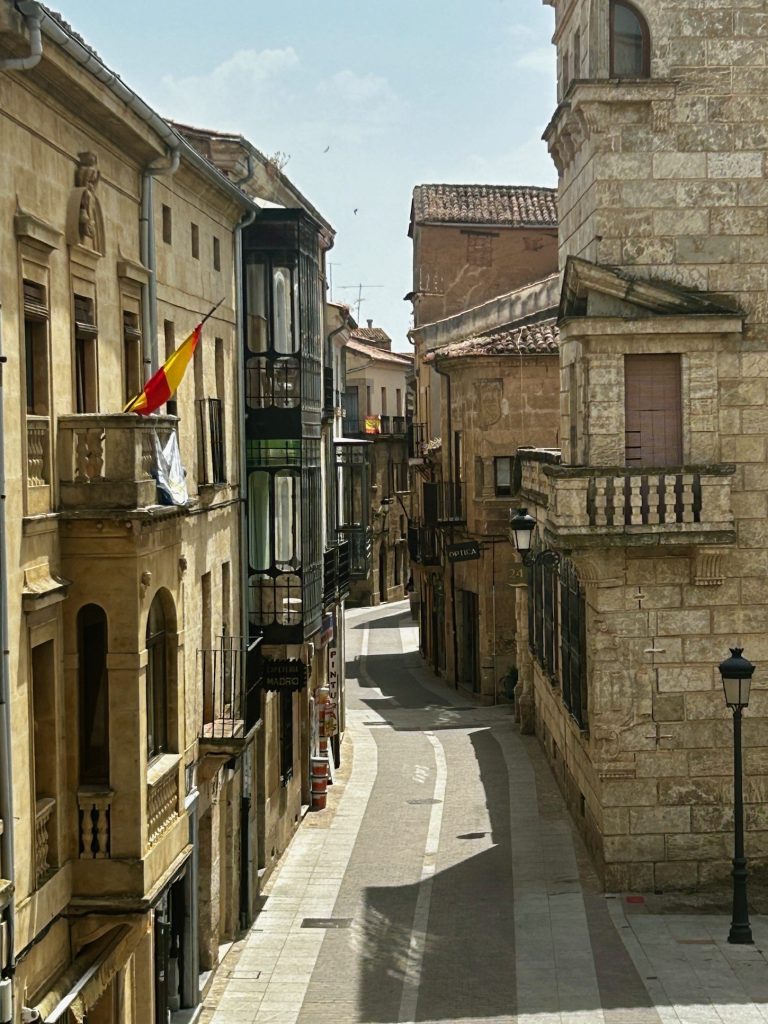
To the north west of the Plaza Mayor, just moments away, the Calle de Julian Sanchez leads to a smaller but very pretty square, the 18th century Plaza Buen Alcade (the Good Mayor Square). You’ll likely cross it looking for the Cathedral. It’s surrounded by arcades and considerably quieter except on a Tuesday when it holds the weekly farmers market.
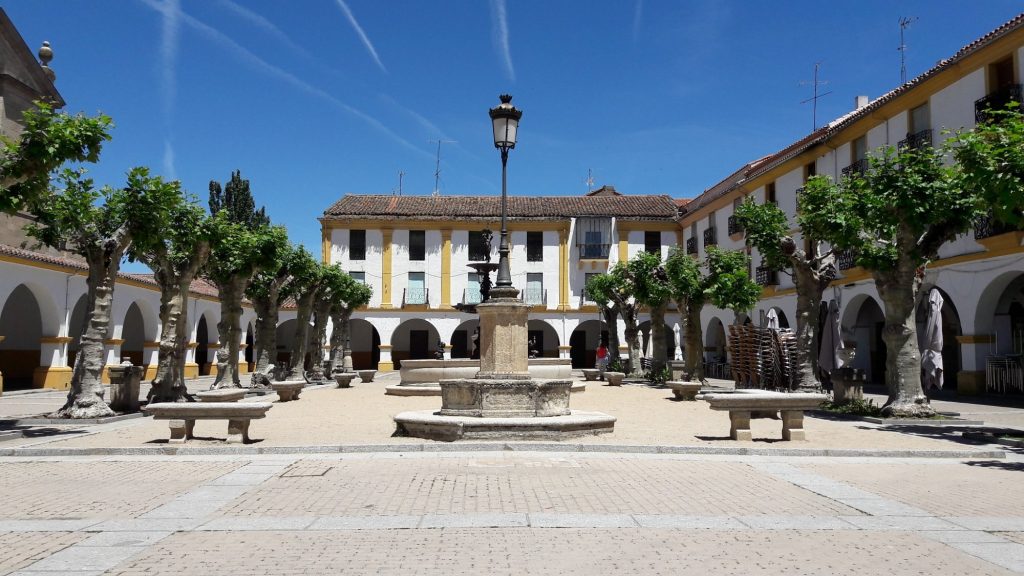
Another square to visit in this area is the Plaza de Conde which proved a very quiet square but, if you’re in to architecture, it contains three of the city’s most impressive mansions being the Palacio Alba da Yeltes (with it’s corner balcony), the Palacio de los Castros and the Palacio de Moctezuma (now a hotel).
And so to the 12th century cathedral of Santa Maria; built on the instructions of King Ferdinand II of Leon “as a testament to the return and ongoing presence of Christianity in the aftermath of Muslim rule”.
This cathedral has, quite literally, been through the wars. It still shows damage from when Wellington’s troops stormed the city and took it from the French (although at least one source claims it was French artillery which damaged the cathedral when first taking the city in 1810). I think the damage was caused by British artillery because the major breach in the city walls through which the British troops stormed on 19 January 1812 was just in front of the cathedral. No matter, the damage occured during the Spanish War for Independence and for that reason it has been left unrepaired. It’s not the original cathedral tower anyway. The original was lost in the 1755 Lisbon earthquake and replaced late in the 18th century.
A small fee provides access to the cathedral, it’s cloisters and the tower. For some reason the tower was closed during my visit; which is a shame because it supposedly affords a great view over the city. However, the inside of the church and the cloisters are impressive enough although the cloister garden would benefit from some tlc. It is a bit of a mess.
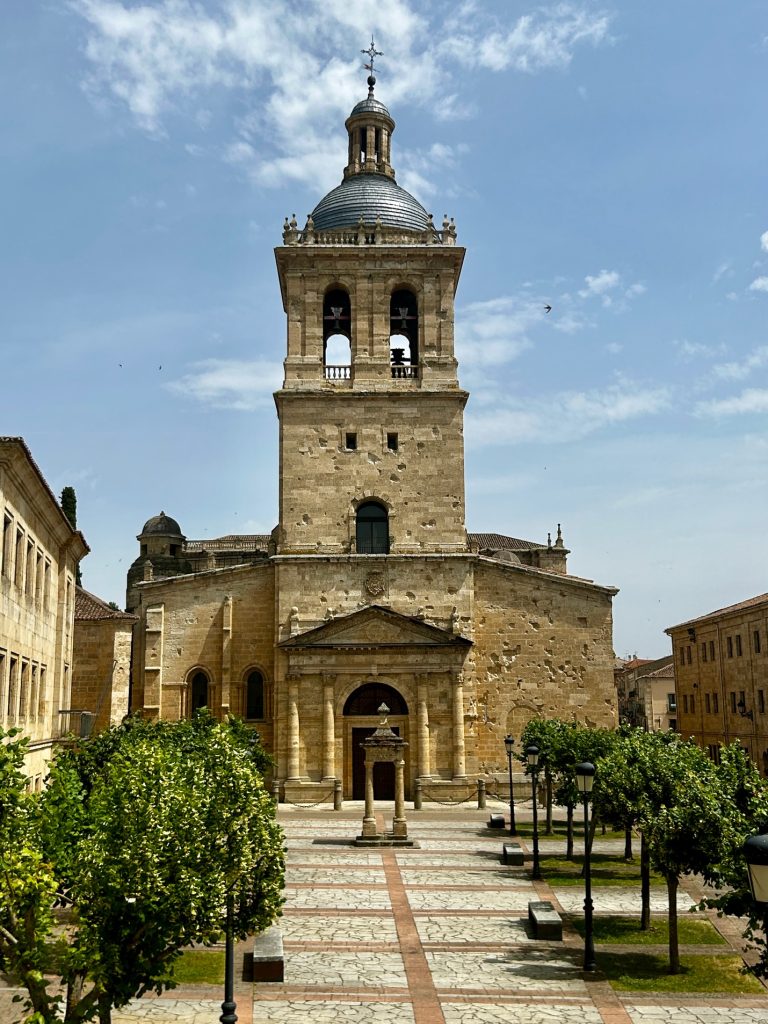
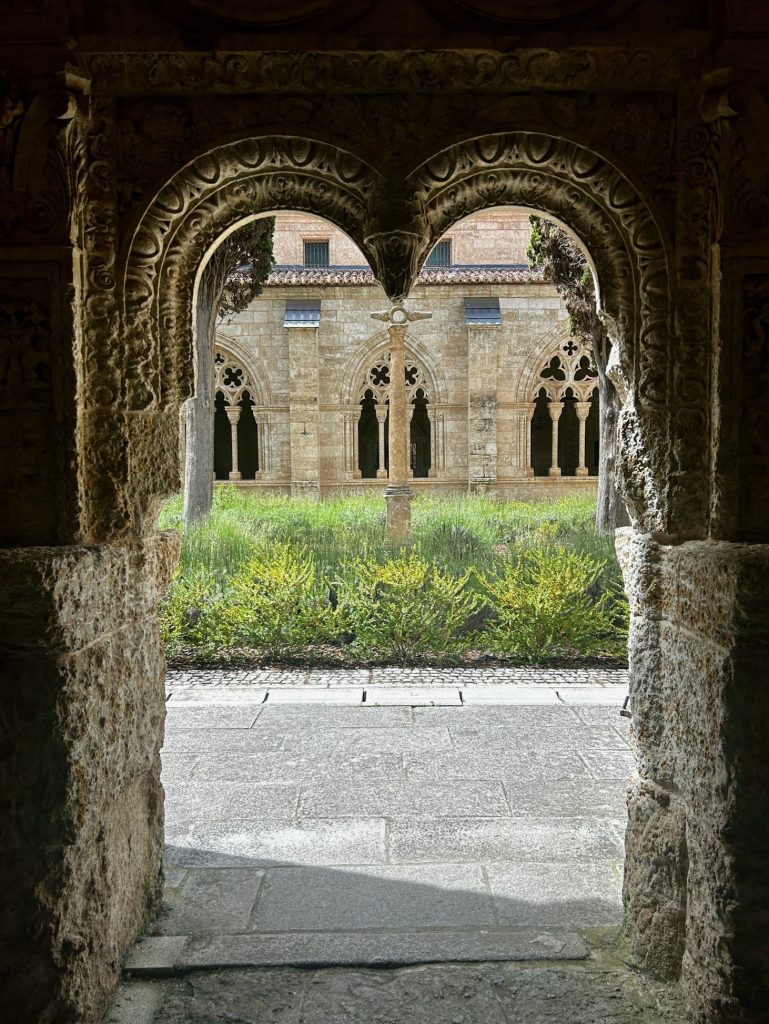
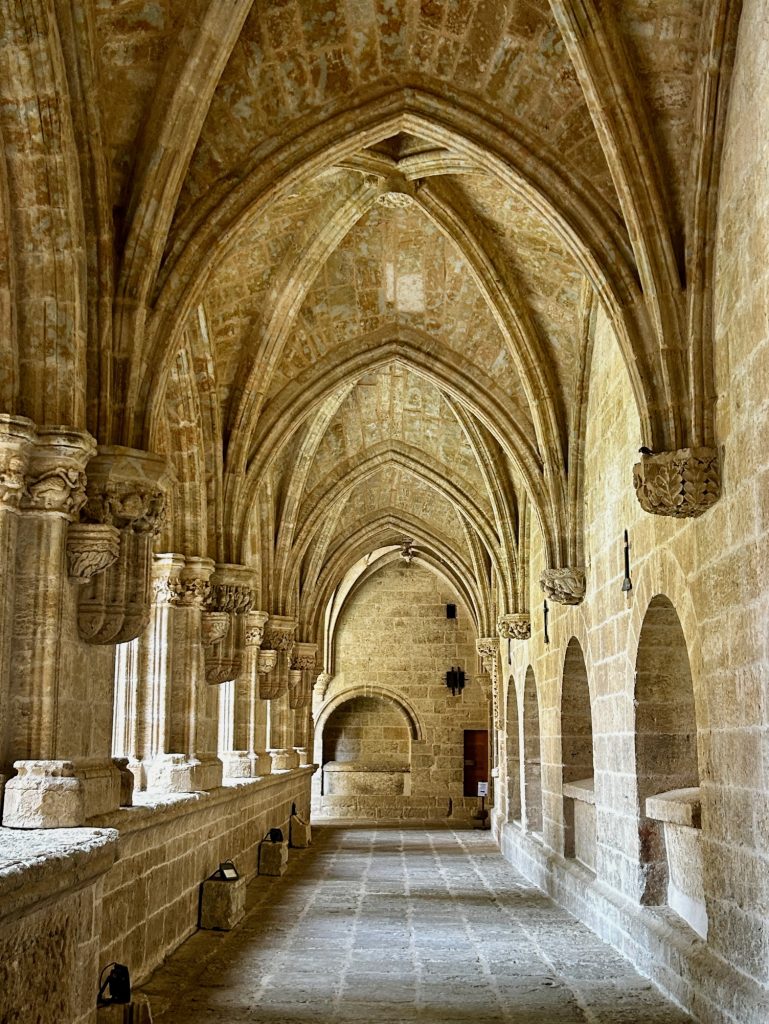
Alongside the cathedral and also worth a visit is the Chapel of Cerralbo; he who owned the Cueto House on the Plaza de Mayor. I am told the First Marquis of Cerralbo had the chapel built after it was decreed that his family could not be interred in the original cathedral but, I think maybe I was being spun a yarn.

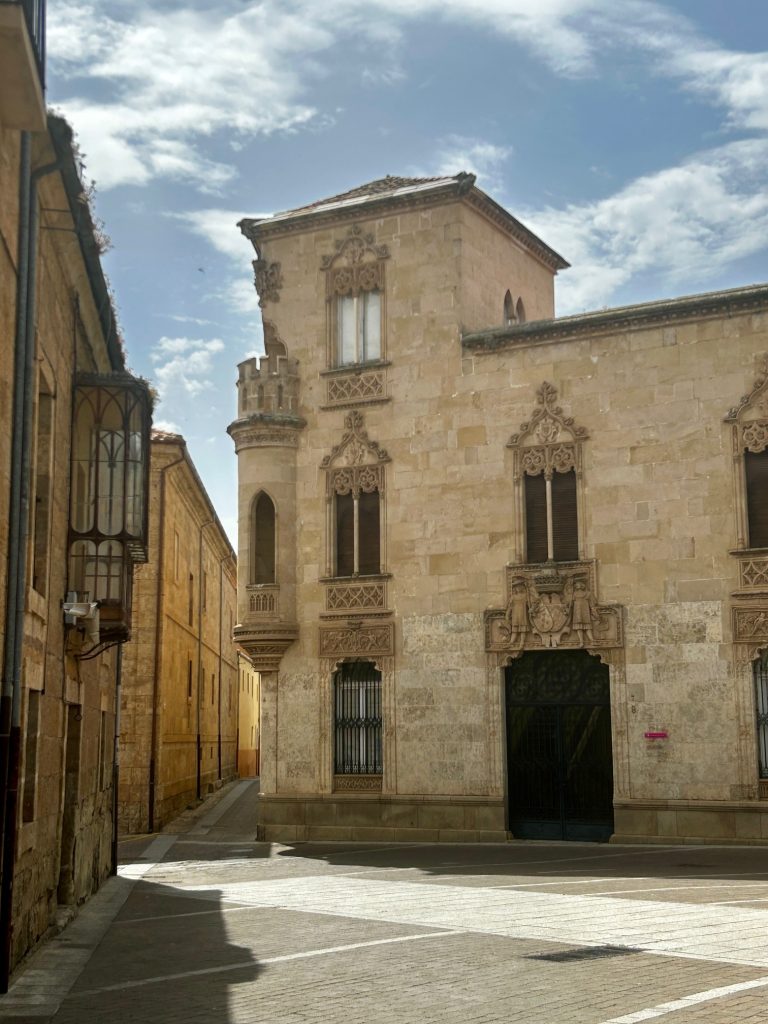


I spent almost a full day wandering Ciudad Rodrigo and was amazed by this wonderful little city. There is so much to see and revel in. There was just enough time before dinner to revisit and walk part of the city walls and look out where the two breaches occured on the night of 19 January 1812.
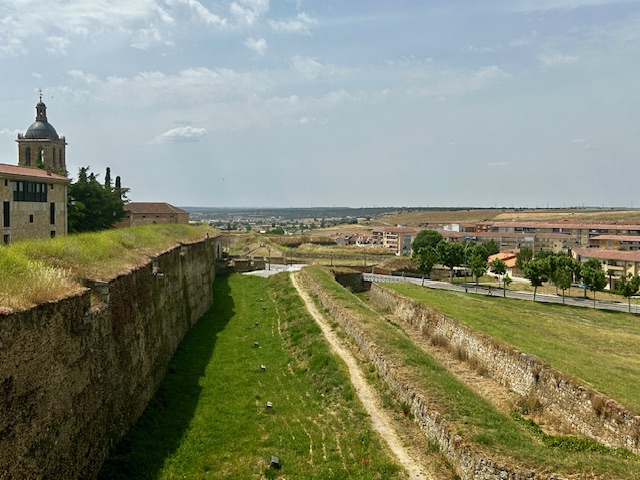
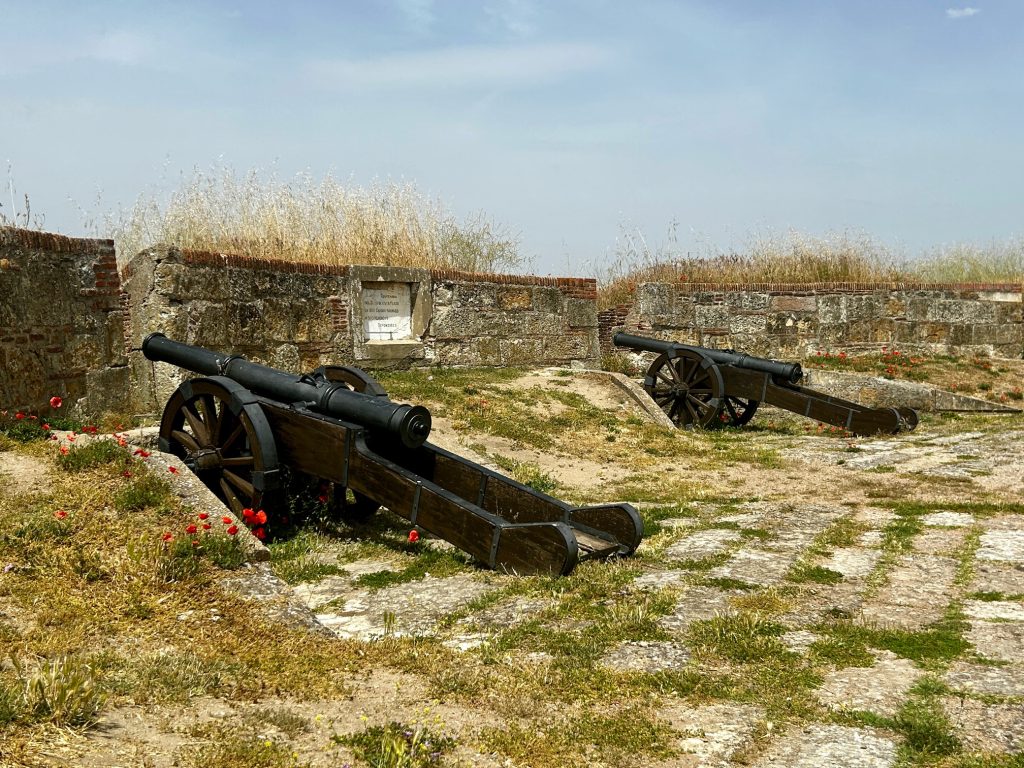
Where we were staying (Camping La Pesquera) is to the south of the Aguera in what I have heard described as the worst part of the city. For my part, it is the best place to take a photo of the bridge and the castle (see below) and it is not as bad an area as you might think. It is a very poor neighbourhood but the locals are friendly. It is the feral dogs which are more of a problem. Two of the locals went out of their way to warn us about them.
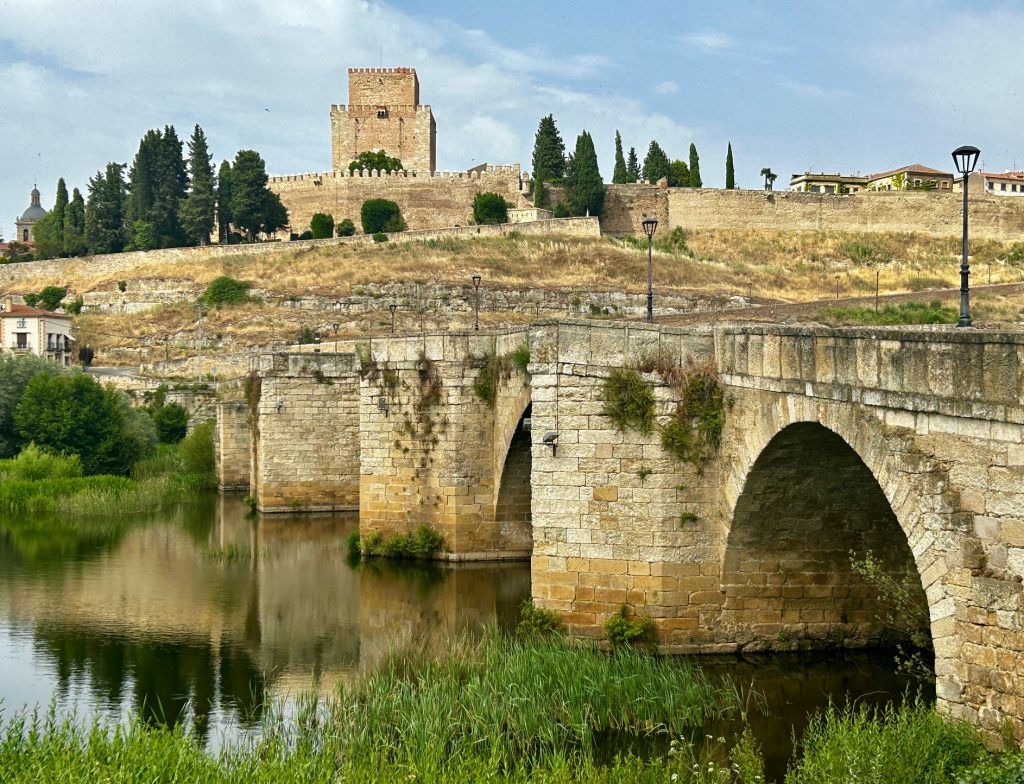
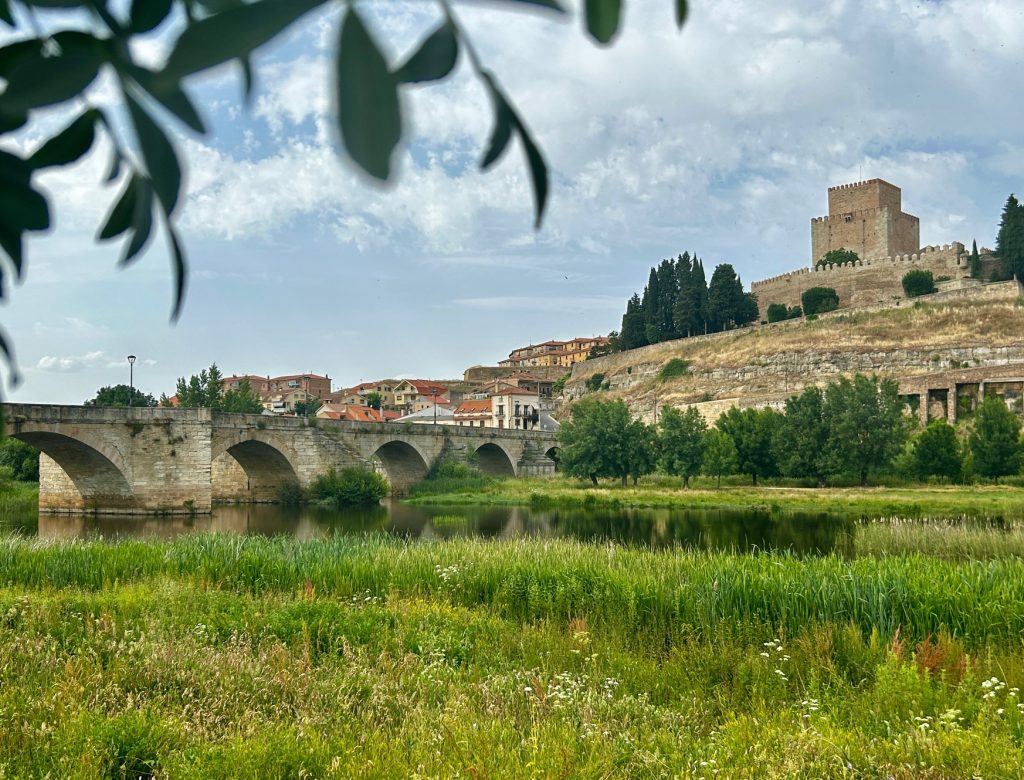
Vanya wanted to join me in the town that evening but was deterred, first by a British biker who had been pursued by a small pack of local dogs and bitten earlier that day. Then, later, she was again warned about the dogs; this time by a local who had also been badly bitten and insisted on showing us the damage to his leg. Carry a big stick and a pocketful of rocks is my advice if you are visiting or staying south of the river. Otherwise, this is a great place to visit.

